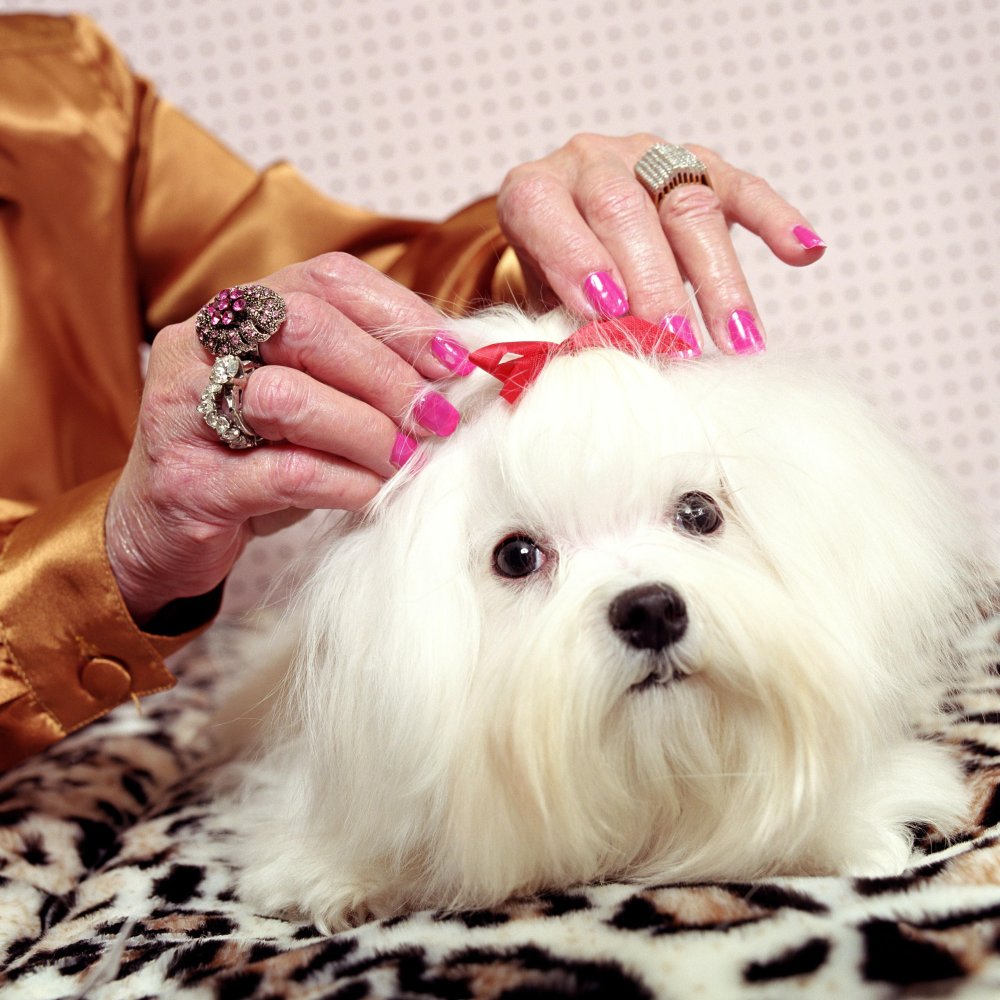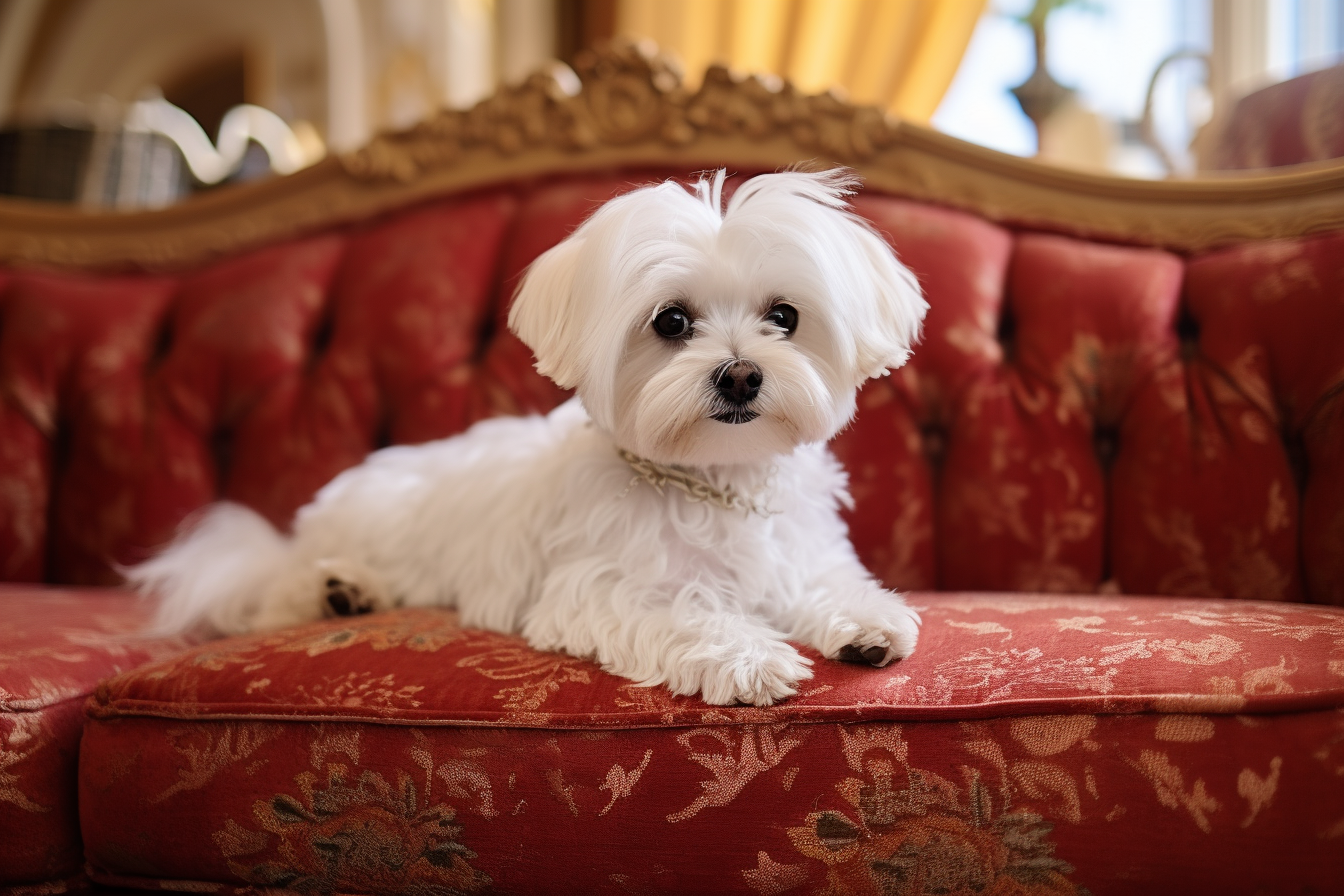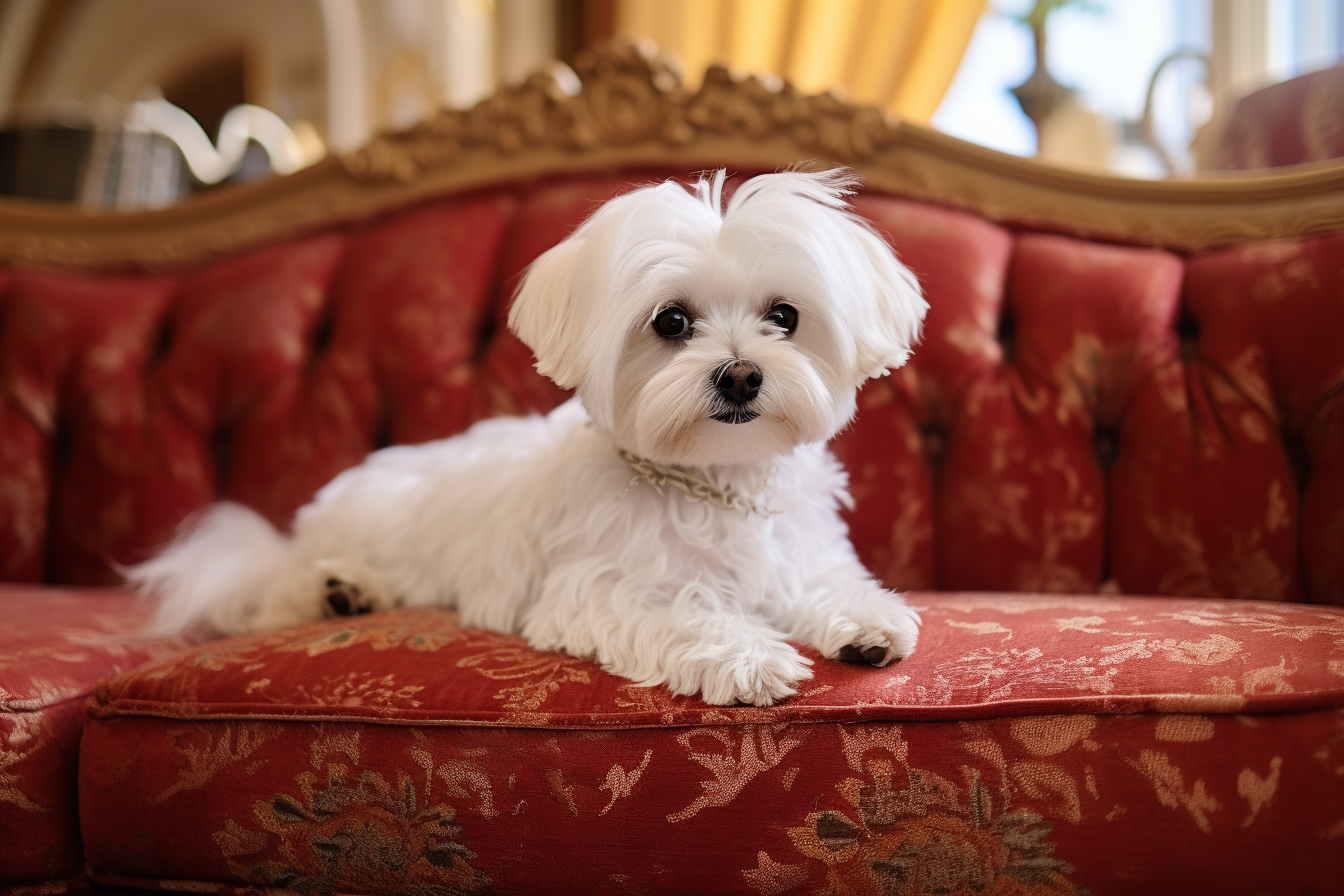- Breed Category: Toy Group
- Country of Origin: Malta
- Average Height: 20-25 cm; 8-10 inches
- Average Weight: 3-4 kg; 6.6-8.8 pounds
- Average Life Span: 12-15 years
- Grooming Requirements: Daily brushing needed
- Exercise Requirements: Low, short daily walks
- Coat Type: Long, silky
- Coat Color Variations: Pure white
- Shedding Level: Low
- Ear Type: Drop ears
- Tail Type: Curled over back
- Temperament: Affectionate, playful, gentle
- Intelligence Level: High
- Barking Tendency: Moderate
- Compatibility with Children: Good with older children
- Compatibility with Other Pets: Generally good
- Training Ease: Relatively easy
- Common Health Issues: Dental issues, luxating patella
- Dietary Needs: High-quality small breed diet
- Energy Level: Moderate
- Drooling Tendency: Low
- Sensitivity to Weather: Sensitive to cold
- Overall Maintenance Level: Moderate to high
- Original Purpose: Companion dog
- Year of Recognition by Kennel Clubs: 1888
- Famous Breed Representatives: None known
- Apartment Friendly: Yes
- Best Suited For: Families, singles, seniors
- Cost of Ownership: Moderate
- Unique Traits: Hypoallergenic coat
- Cultural Significance: Ancient breed, royal favourite
- Popularity Rank: High
Imagine a cloud with legs, and you’ve got the Maltese dog. This breed, with its silky white coat, is as charming as it is ancient. Originating from the Mediterranean, the Maltese has been a beloved companion for centuries, gracing the laps of royalty and commoners alike. Known for their gentle and playful nature, these dogs are perfect for those seeking a small, affectionate pet. This article aims to delve into the unique characteristics, rich history, and essential care tips for the Maltese. Whether you’re considering adding one to your family or simply curious, understanding this breed will help you appreciate its timeless appeal and ensure a happy, healthy life for your furry friend.
History and Origin of the Maltese Breed

Early Development of the Maltese Breed
The Maltese breed traces its roots back to ancient times, with origins in the Mediterranean region. These little dogs were highly prized for their beauty and charm, often seen as symbols of status and elegance. Over the centuries, selective breeding refined their distinctive silky white coat and compact size, making them the perfect lap dogs.
Role in Ancient Societies and as Companions
In ancient societies, the Maltese were more than just pets; they were companions to the elite. Their presence in art and literature from ancient Greece and Rome highlights their esteemed status. These dogs were often gifted among royalty, serving as tokens of friendship and alliance.
Key Historical Figures and Events in the Breed’s History
Throughout history, the Maltese has been associated with notable figures, including Queen Elizabeth I and Mary Queen of Scots, who adored these charming companions. Their popularity surged during the Renaissance, as they became a favourite among European nobility. This enduring appeal has cemented the Maltese as a beloved breed across the ages.
Physical Characteristics of the Maltese Dog

Appearance
The Maltese is a small breed, typically weighing between 1.8 to 3.6 kilograms, with a height of about 20 to 25 centimetres at the shoulder. Their most striking feature is their long, silky white coat, which flows elegantly down their sides. This luxurious coat is not just for show; it’s a hallmark of the breed, requiring regular grooming to maintain its beauty.
Distinctive Features
Beyond their coat, Maltese dogs have a compact, well-proportioned body and a slightly rounded skull. Their dark, expressive eyes and black button nose stand out against their white fur, giving them a lively and alert expression. Their ears are feathered and hang close to the head, adding to their overall charm.
Unique Physical Traits
One of the unique traits of the Maltese is their lack of an undercoat, which means they shed less than other breeds. This makes them a great choice for those with allergies. Their coat, while beautiful, is also quite delicate, requiring gentle handling and care to prevent tangles and matting.
Temperament and Behaviour of the Maltese Dog

Typical Personality Traits
Maltese dogs are known for their affectionate and playful nature. They thrive on human interaction and are always eager to be part of family activities. Their alertness makes them excellent watchdogs, despite their small size. These dogs are intelligent and quick learners, often surprising their owners with their ability to pick up new tricks.
Suitability as a Family Pet and Companion
As a family pet, the Maltese is a fantastic choice. Their gentle disposition and love for cuddles make them ideal companions for people of all ages. They adapt well to different living environments, whether it’s a bustling household or a quiet apartment. Their small size and minimal shedding are added bonuses for those with limited space or allergies.
Interaction with Children and Other Animals
Maltese dogs generally get along well with children, especially when socialised from a young age. They enjoy playtime and can be quite patient with kids. However, due to their small size, it’s important to supervise interactions to ensure gentle handling. With other animals, Maltese dogs are usually friendly and sociable, making them a harmonious addition to multi-pet households.
Training and Exercise Needs for the Maltese Dog

Importance of Early Training and Socialisation
Getting your Maltese started with training and socialisation early on is crucial. These little dogs are smart and eager to learn, so introducing them to different environments, people, and other animals helps them grow into well-rounded companions. Early socialisation can prevent behavioural issues and ensure they’re comfortable in various situations.
Recommended Training Techniques
Positive reinforcement is the way to go with Maltese dogs. They respond well to treats, praise, and playtime as rewards. Keep training sessions short and fun to maintain their interest. Consistency is key, so make sure everyone in the household is on the same page with commands and rules.
Daily Exercise Requirements and Activities They Enjoy
Despite their small size, Maltese dogs need regular exercise to stay healthy and happy. A couple of short walks each day, combined with some playtime, usually does the trick. They love games like fetch or tug-of-war and enjoy interactive toys that challenge their minds. Just remember, they’re not built for endurance, so keep activities moderate.
Health and Lifespan of the Maltese Dog
Common Health Issues
Maltese dogs, like many small breeds, can be prone to certain health issues. Dental problems are common, so regular teeth cleaning is a must. They may also experience patellar luxation, where the kneecap slips out of place, and some can develop heart issues as they age. Keeping an eye on their health and regular vet check-ups can help catch these issues early.
Average Lifespan and Health Tips
The average lifespan of a Maltese is around 12 to 15 years. To keep them healthy, a balanced diet and regular exercise are essential. Their long coat needs consistent grooming to prevent matting, which can lead to skin problems. Regular grooming sessions also provide a chance to check for any unusual lumps or bumps.
Preventative Care Recommendations
- Schedule regular vet visits for vaccinations and health screenings.
- Maintain a healthy diet to prevent obesity, which can exacerbate joint issues.
- Brush their teeth regularly to prevent dental disease.
- Keep their coat clean and tangle-free with frequent grooming.
- Provide mental stimulation with toys and training to keep them sharp.
Grooming and Maintenance for the Maltese Dog

Coat Care and Grooming Routines
The Maltese’s stunning white coat is its crowning glory, but it does require some effort to keep it looking its best. Regular brushing, ideally daily, helps prevent tangles and matting. A pin brush or a comb with wide teeth works well for this task. Bathing should be done every few weeks, using a gentle dog shampoo to maintain the coat’s natural oils.
Shedding and Seasonal Grooming Tips
One of the perks of owning a Maltese is their minimal shedding, thanks to their lack of an undercoat. However, this doesn’t mean they don’t need regular grooming. During seasonal changes, you might notice a bit more hair around the house, so it’s a good idea to increase brushing frequency. Trimming the hair around their eyes and paws can also help keep them comfortable and tidy.
Diet and Nutrition for the Maltese Dog

Nutritional Needs for Optimal Health
Feeding your Maltese the right diet is crucial for their health and happiness. These little dogs need a balanced diet rich in proteins, healthy fats, and essential vitamins. High-quality commercial dog food formulated for small breeds often meets these needs, but always check the ingredients to ensure it’s free from fillers and artificial additives.
Foods to Include and Avoid
Include lean meats like chicken or turkey, along with vegetables such as carrots and peas. These provide essential nutrients and keep their coat shiny. Avoid foods high in fat and sugar, as well as those toxic to dogs like chocolate, onions, and grapes. Always provide fresh water to keep them hydrated.
Feeding Schedules and Portion Recommendations
Stick to a regular feeding schedule, typically twice a day, to maintain their energy levels. Portion sizes depend on their age, weight, and activity level, but generally, a small breed formula will have guidelines on the packaging. Monitor their weight and adjust portions as needed to prevent obesity.
Fun Facts and Trivia About the Maltese Dog
Interesting Tidbits About the Breed
The Maltese is one of the oldest toy breeds, with a history that dates back over 2,000 years. Despite their delicate appearance, these dogs are known for their surprising agility and speed. They were once believed to have healing powers, with ancient cultures using them as “comforters” for the sick. Their coat, while stunning, is hypoallergenic, making them a great choice for allergy sufferers.
Famous Maltese Dogs in Media or History
Throughout history, the Maltese has captured the hearts of many, including famous figures. Queen Elizabeth I and Mary Queen of Scots were known to have adored these charming companions. In more recent times, a Maltese named “Trouble” made headlines as the world’s richest dog, inheriting millions from her owner, Leona Helmsley. In the world of entertainment, the Maltese has appeared in films and TV shows, often portraying the quintessential pampered pet.
Final Thoughts

The Maltese is a timeless symbol of elegance and companionship. With their affectionate nature and minimal exercise needs, they make ideal pets for a variety of households. Despite their grooming requirements, the rewards of owning a Maltese are immense, offering both joy and loyalty. Embrace the unique charm and history of this breed, ensuring a fulfilling life for your Maltese companion. Consider adopting a Maltese to experience the joy of this delightful breed firsthand.
